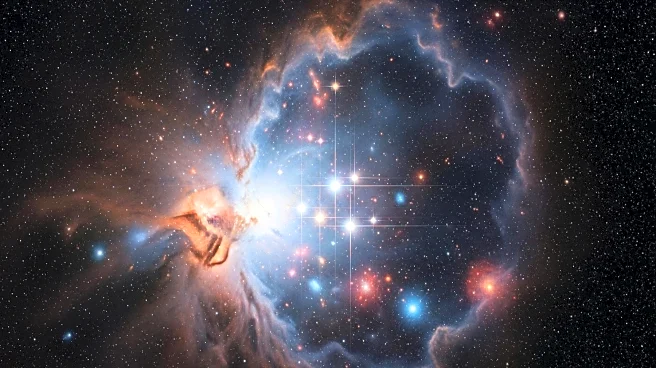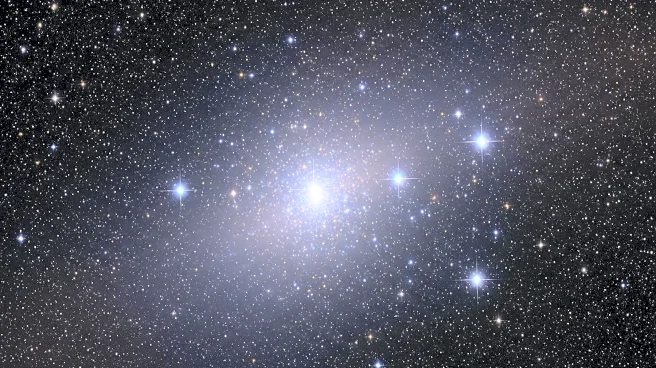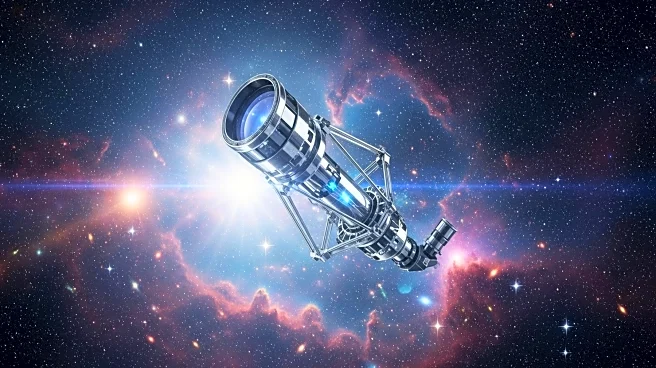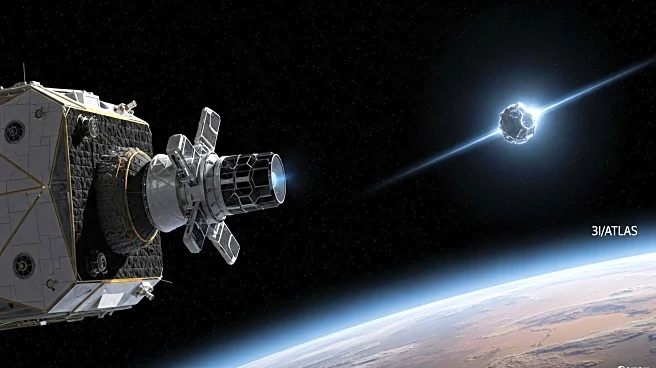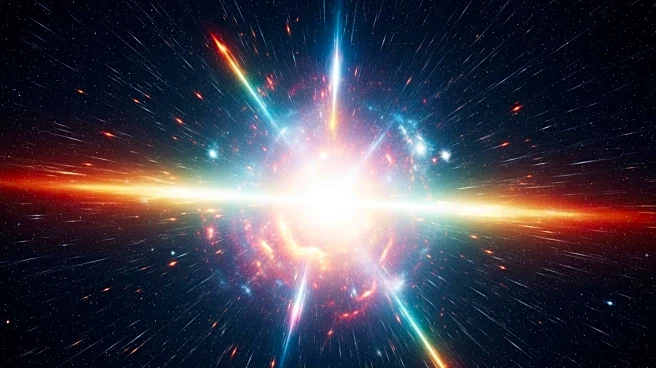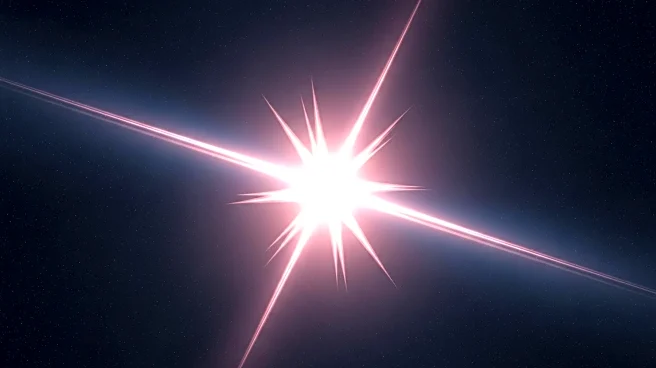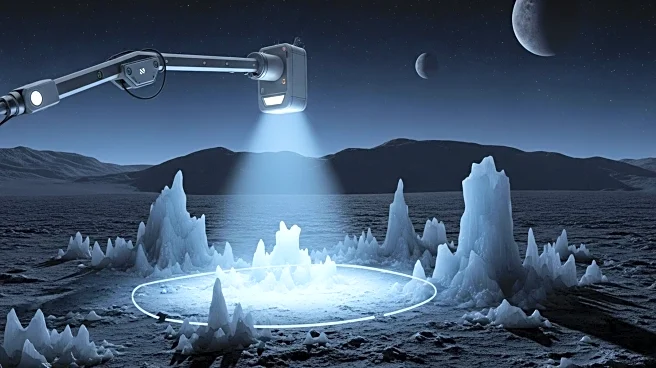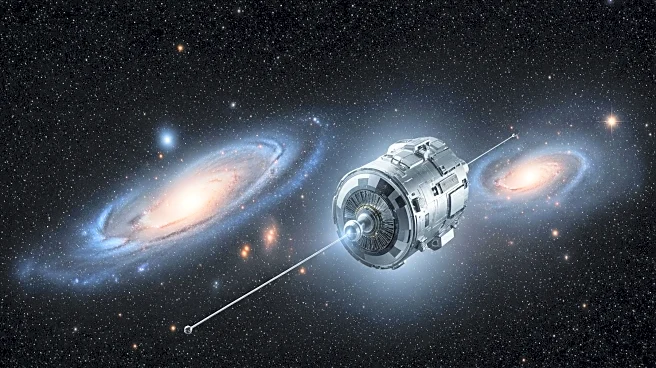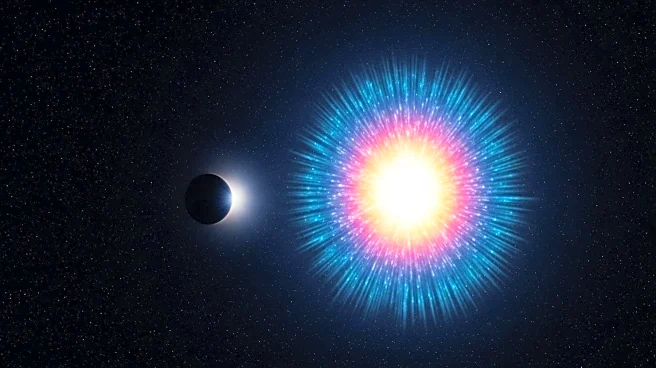What's Happening?
The Hubble Space Telescope has provided new insights into the Pismis 24 star cluster, located 5,500 light-years away in the constellation Scorpius. This cluster, situated at the core of the Lobster Nebula, is home to some of the most massive and luminous stars in the Milky Way. Notably, the star Pismis 24-1, once thought to be a single massive star, was revealed by Hubble in 2006 to be at least two separate stars orbiting each other, with masses of 74 and 66 solar masses respectively. These stars emit intense ultraviolet radiation and stellar winds, shaping the surrounding interstellar gas and dust into towering spires. The James Webb Space Telescope (JWST) has captured these structures in stunning detail using its Near Infrared Camera, highlighting the dynamic processes of star formation within the cluster.
Why It's Important?
The findings from the Hubble and James Webb telescopes are significant for understanding the life cycles of massive stars and the processes of star formation. The Pismis 24 cluster serves as a natural laboratory for studying these phenomena, as the massive stars within it are among the most extreme in the galaxy. The insights gained from these observations can enhance our understanding of stellar evolution and the conditions that lead to the birth of new stars. This knowledge is crucial for astrophysics, as it helps scientists model the formation and evolution of galaxies, including our own Milky Way. The ability to observe such distant and massive stars also underscores the capabilities of modern telescopes in advancing space science.
What's Next?
Future observations by the James Webb Space Telescope and other instruments will continue to explore the Pismis 24 cluster and similar regions. These studies aim to further unravel the complexities of star formation and the impact of massive stars on their environments. As technology advances, astronomers hope to gain even more detailed insights into the processes occurring in these distant star nurseries, potentially leading to new discoveries about the universe's most massive stars and their role in cosmic evolution.
Beyond the Headlines
The study of massive stars like those in Pismis 24 has broader implications for understanding the chemical enrichment of galaxies. Massive stars play a key role in synthesizing heavy elements, which are dispersed into the interstellar medium when these stars end their lives in supernova explosions. This process contributes to the chemical diversity observed in galaxies and is essential for the formation of planets and life. Additionally, the ability to observe such phenomena from Earth highlights the importance of international collaboration in space exploration, as the Hubble and James Webb telescopes are joint projects involving NASA, the European Space Agency, and the Canadian Space Agency.
